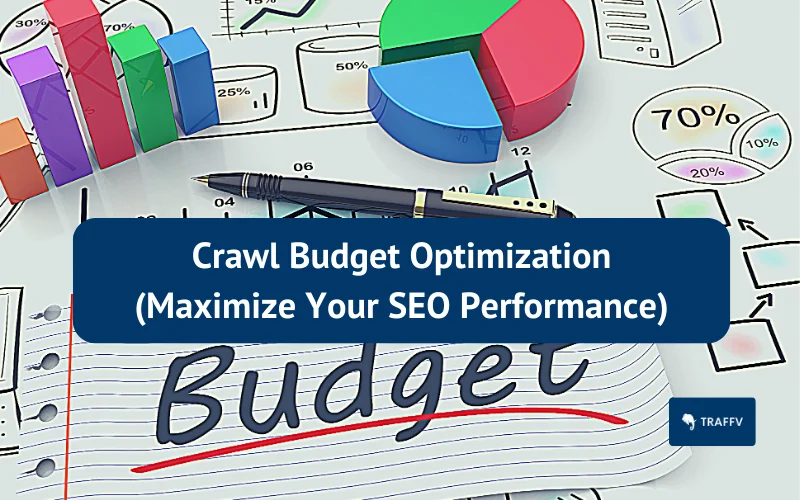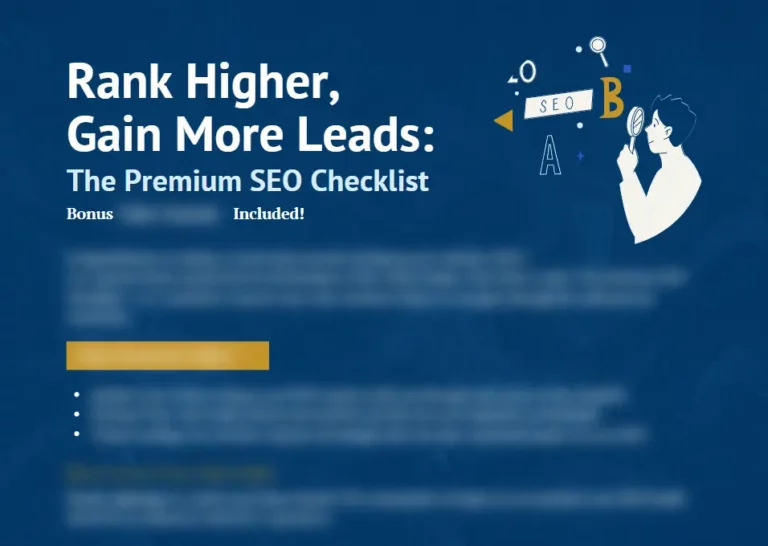Imagine the impact on your website’s search engine rankings if you could efficiently manage how search engines crawl and index your content.
That’s precisely where crawl budget optimization comes into play.
By understanding and optimizing your website’s crawl budget, you can significantly improve your SEO performance and boost your online visibility.
TL:DR
- Crawl budget optimization is essential for successful SEO and can be improved by creating fresh content, increasing links, and monitoring with tools like Google Search Console.
- Strategies such as fixing crawl errors, improving site speed, managing duplicate content & enhancing internal linking structure are important for optimizing your crawl budget.
What is Crawl Budget
Crawl budget is the number of pages a search engine, such as Google, crawls within a given timeframe.
This budget is determined by two main components: crawl rate and crawl demand.
Understanding your site’s crawl budget is essential for optimizing your website’s performance.
Optimizing your crawl budget ensures that search engines prioritize and index your most important pages, leading to better search engine rankings and improved SEO performance.
Crawl Rate
Crawl rate refers to the number of pages a search engine can crawl without causing server issues, also known as the crawl limit.
Google adjusts its crawl rate based on the crawl health of your site. For instance, if your site is functioning well with a higher crawl rate, Google may increase the limit.
On the other hand, if your site is experiencing issues like server errors (5xx) or too many requests (429), Google will reduce the rate of crawling.
To optimize your website’s crawl budget, it’s essential to manage the number of crawled pages and prevent excessive stress on your server.
Crawl Demand
Crawl demand is determined by factors such as popularity and the presence of links.
Google prioritizes pages with more links and a higher PageRank when crawling.
To optimize your crawl budget, it’s vital to keep your content fresh and updated, as stale content may cause Google to reduce the frequency of their crawls.
Enhancing the significance of your pages can be done in several ways:
- Incorporating more useful data and enriching the content
- Making the pages more attractive to search engines like Google
- Increasing the number of external and internal links, including those to internal search result pages
These strategies can also help you use your crawl budget wisely.
Monitoring Your Crawl Budget
Keeping an eye on your crawl budget is crucial for identifying issues and optimizing your website’s performance.
By understanding how search engines interact with your site, you can make informed decisions about how to improve it.
Google Search Console
Google Search Console is an invaluable tool for monitoring your crawl budget.
The Crawl Stats Report provided by the platform gives you insights into Google’s crawling history on your website, such as the number of requests made and when they occurred.
By integrating Google Analytics, you can further enhance your understanding of user behavior and optimize your site’s performance.
To access the report, simply log in to Search Console, go to the “Settings” page, and open the Crawl Stats Report.
By examining the data provided, you can identify potential issues and ensure that your crawl budget is being used efficiently.
Server Log Analysis
Server log analysis involves examining server logs to determine which pages are being crawled and detect any potential issues.
This process is crucial for crawl budget optimization, as it helps you identify problems that may affect your crawl budget and optimize the time allocated by search bots to your website.
Metrics such as crawl rate, number of pages crawled per day, and crawls/visits ratio can be utilized to analyze server logs for crawl budget optimization.
Additionally, server logs can help you detect any 5xx or 4xx errors that may impact your crawl budget.
Optimizing Your Crawl Budget
Now that you understand the importance of crawl budget and how to monitor it, let’s dive into the optimization process.
Optimizing your crawl budget involves strategies like fixing crawl errors, improving site speed, and managing duplicate content.
By following these steps, you can ensure that pages search engines prioritize and index your most important content more effectively.
Fixing Crawl Errors
Crawl errors, such as 404s and redirects, can significantly reduce your crawl budget efficiency.
To address these issues, consider resolving code problems or setting up redirects. Tools like Screaming Frog are reliable options for performing website audits and identifying crawl errors.
Once you’ve identified any errors, address all 4xx and 5xx status codes and utilize tools like Yoast SEO Premium for URL redirection.
By rectifying these errors, you can swiftly recover wasted crawl budget and improve your website’s SEO performance.
Improving Site Speed
Site speed is a crucial factor in SEO performance, as it directly impacts the user experience and search engine rankings.
By enhancing your site speed, you enable search engines to crawl more pages within the allocated budget. This results in better indexing and higher visibility for your most important pages.
Investing in site speed optimization not only benefits your crawl budget, but also leads to higher conversion rates and repeat business.
Managing Duplicate Content
Duplicate content can negatively impact your crawl budget, as search engines may allocate resources to index multiple pages with the same content instead of unique pages.
To manage duplicate content, use canonical tags and URL parameters to indicate which version of the page should be indexed.
By doing so, you prevent search engines from wasting crawl budget on unnecessary pages and ensure that your most important content gets the attention it deserves.
Canonical tags and URL parameters are easy to implement and can help you manage your crawl budget.
Enhancing Internal Linking Structure
A well-structured internal linking system is essential for maximizing crawl budget efficiency.
Internal links help distribute PageRank to your most important pages and guide search engines through your website’s hierarchy.
By optimizing your internal linking structure, you improve your website’s crawlability, indexing, and overall SEO performance.
Flat vs. Hierarchical Structure
When it comes to internal linking structures, flat structures are preferred over hierarchical ones for better crawlability and indexing.
Flat structures have fewer layers of management and provide a more straightforward path for search engine crawlers to discover and index all webpages.
On the other hand, hierarchical structures have multiple layers of management, which can make it more challenging for search engine crawlers to detect and index all webpages.
By adopting a flat website structure for your website, you allow search engines to crawl and index your content more efficiently, leading to better SEO performance.
Prioritizing High-Value Pages
Prioritizing high-value pages is crucial for maximizing crawl budget efficiency.
These are pages that offer the most SEO value, such as product category and sub-category pages.
To prioritize high-value pages, ensure that they have more internal links than other pages on your website. This helps search engine crawlers prioritize these pages when indexing your site.
Additionally, avoid creating orphan pages, which are pages without any internal or external links pointing to them.
These pages not only consume crawl budget, but also provide a poor user experience.
Leveraging XML Sitemaps and Robots.txt
XML sitemaps and robots.txt files play a crucial role in helping search engines understand and navigate your website more efficiently.
By leveraging these tools, you can ensure that search engines allocate your crawl budget effectively and index your most important pages.
Let’s explore some best practices for using XML sitemaps and robots.txt files for crawl budget optimization.
XML Sitemap Best Practices
To optimize your XML sitemaps, follow these steps:
- Make sure they are up-to-date and include all essential pages of your website, considering how many pages it has.
- Avoid including pages with a “noindex” tag, as these pages will not be indexed by search engines.
- For large websites, divide your sitemaps into smaller ones, ensuring that each sitemap is no more than 10MB and contains no more than 50,000 URLs.
Utilize tools like Google Search Console and Screaming Frog to automatically generate and submit your XML sitemaps.
Utilizing Robots.txt
Robots.txt is a text file that provides instructions to search engine crawlers, indicating which pages or sections of your website should or should not be crawled.
By using robots.txt, you can prevent certain pages from being indexed and optimize your crawl budget more effectively.
To leverage robots, simply block unnecessary sections of your website and prioritize the pages that truly matter for your SEO performance.
Optimal Crawl Budget Management
By understanding the concepts of crawl rate and crawl demand, monitoring your crawl budget using tools like Google Search Console and server log analysis, implementing optimization strategies, and enhancing your internal linking structure, you can make the most of your crawl budget and maximize your website’s visibility.
Engaging SEO services can be a time-saving and resource-saving option for website owners who may lack the necessary knowledge or resources to optimize their crawl budget themselves.
Don’t miss out on the opportunity to boost your online presence – start optimizing your crawl budget today!
Frequently Asked Questions
How is crawl budget determined?
Crawl budget is determined by Google, based on factors like the size of the website, page speed, crawl limit set in Search Console, and errors encountered when crawling.
The amount of resources Google allocates to crawl a website is referred to as its ‘crawl budget’, and ensuring it is utilised efficiently can have a positive impact on SEO performance.
Why is crawl budget important for SEO?
Crawl budget is essential for SEO because it controls how often and thoroughly Google visits and scans your website. With an optimized crawl budget, you can ensure that all of your content is indexed and ranked properly, allowing more users to discover your website and its content.
What is crawl budget?
Crawl budget is a website’s allocation of resources dedicated to search engine crawlers. It affects the frequency and number of pages that are crawled by the search engine, ensuring an optimized user experience.
By understanding crawl budget, website owners can ensure that their content is properly indexed and ranked by search engines. This can help to improve visibility and organic search traffic.
How can I monitor my crawl budget?
Monitoring your crawl budget is essential for optimizing website performance, and can be done through Google Search Console and server log analysis. These tools will provide an insight into how the search engine is crawling your site, and allow you to make adjustments as necessary.
What are some strategies for optimizing my crawl budget?
By addressing errors in your website, improving page loading speeds, minimizing duplicate content, and optimizing internal linking structure, you can maximize the efficiency of your crawl budget.
This will help ensure that search engine crawlers are able to quickly and efficiently find and index all of your content. This will help your website rank higher in search engine results pages (SERPs).




